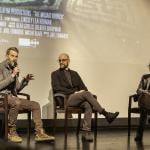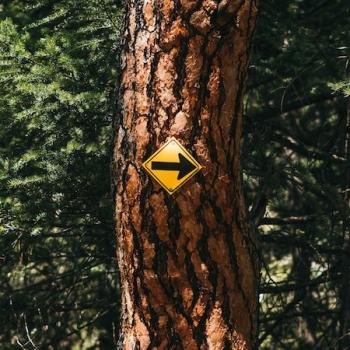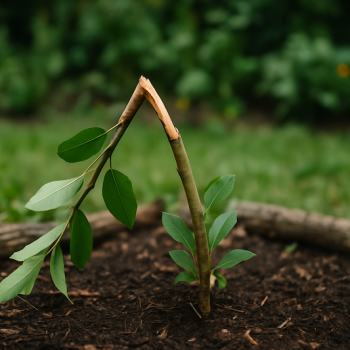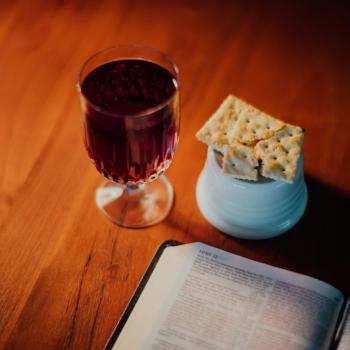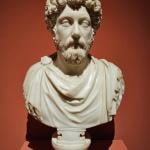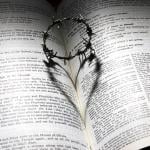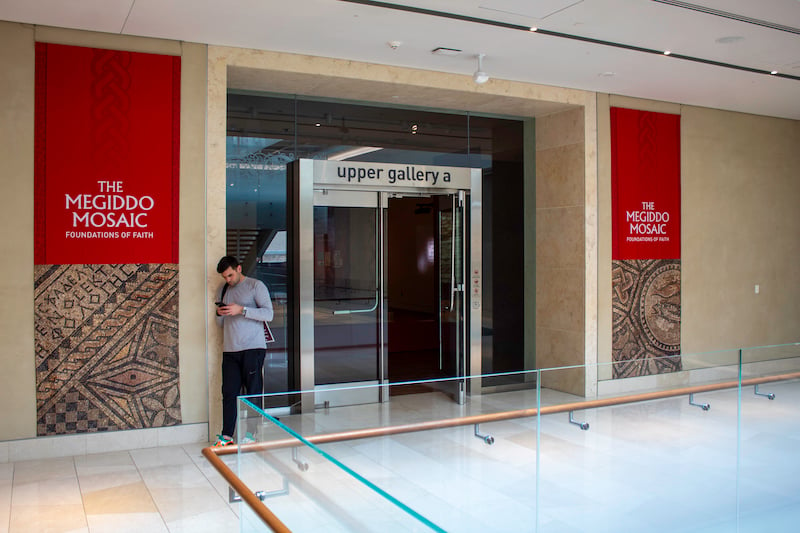
A few months back, Dr. Anthony L. Blair—President of Evangelical Seminary, Kairos Executive Partner, and Professor of Leadership and Historical Studies at Kairos University—had praised the Museum of the Bible in a Facebook post, after his visit. This affirmation in a Facebook post certainly piqued my interest to see it for myself. As a doctoral student at Kairos University, I have great respect for Dr. Blair’s opinion, and his endorsement prompted me to reconsider. Additionally, the Megiddo Mosaic—an early Christian church floor that sheds light on the foundations of the Christian faith—also piqued my interest enough to set aside my initial reservations. As I will explore, the Megiddo Mosaic is a prophetic witness for our evangelical faith, and it upholds the testimony of the Resurrection – a timely thing to see in the Lent season.
At First, I Had Reservations About the Museum of the Bible
The Museum of the Bible opened on November 17, 2017. When it did, I was hesitant to visit, because of a wave of negative press coverage that made me wary of the endeavor. While the criticism wasn’t directly aimed at the museum itself, it was tied to Steve Green—the overtly political, significantly financially invested founder, outspoken owner of Hobby Lobby and Chairman of the Board at the Museum of the Bible. This was during a time when many Protestant and evangelical leaders were making headlines for tax scandals, moral failings, and oppressive leadership. Given Green’s fiery political statements at the time and the negative press including smuggling claims, forgery scandals, and the acquisition of some stolen Egyptian Artifacts, I had early on kept my distance, skeptical, and expecting the museum to be politically charged rather than driven by serious scholarship. Since then, Green has found himself less in the spotlight, and the museum has made notable efforts to improve transparency and scholarly credibility.
The Megiddo Mosaic Invited Me Past My Reservations
In late January of 2024, I finally decided to visit the Museum of the Bible. Dr. Blair’s comments and the presentation of the Megiddo Mosaic had drawn me in. I used a Spiritual Direction day from work, and we took our whole family out of school and work to experience the Museum of the Bible together. It was a great trip to Washington D.C. for the day. We actually spent over four and a half hours in the museum and still felt like there was more to see – and there was more to see. The sheer volume of information and artifacts was overwhelming—it felt like trying to drink from a firehose. Our daughters remarked that they found the Museum of the Bible even more informative, interactive, and artifact-filled than our other favorite Washington D.C. museum—the National Air and Space Museum.
The Powerful Exhibits of the Museum of the Bible
As we moved through the museum, I was geeking out—not just as a theologically trained pastoral leader but also as a history enthusiast. The history I studied in seminary, books, and the scriptures were now alive before me. It felt like we had found our people. I was wearing a hat from Fuller Seminary, where I completed two of my three master’s degrees, and while on the Impact of the Bible floor, a current Fuller student stopped me. We had a quick but meaningful interaction—a moment of connection with a kindred spirit. The Museum of the Bible holds significant apologetic, theological, and practical value for Christians. From a historic point of view, I loved exploring:
- Megiddo Mosaic: Foundations of Faith on Floor 5, is a groundbreaking interactive exhibit featuring an ancient mosaic from one of the earliest known Christian worship sites. Its inscriptions, funded by local believers—including a Roman centurion and a woman called “the God-lover”—are the oldest known to identify Jesus as God.
- People of the Land exhibits on Floor 4, showcases fascinating archaeological discoveries from the Israel Antiquities Authority, offering insight into life in ancient Israel and Hebrew culture. It features artifacts from Nebuchadnezzar, Assyria, Egypt, and more. This section also explores the history of Bible translation, displaying numerous artifacts, codices, fragments, and historical mysteries. Visitors can also watch videos on how the canon of Scripture was formed and how these ancient fragments were discovered.
- Stories of the Bible exhibits on Floor 3, allowing visitors to walk through the world of the Old Testament through video and experiences, likewise with the New Testament. Among the most popular, and my children’s favorite, was the recreated first-century Galilean village that visitors can walk through, see artifacts and recreations, and talk to period-trained actors.
- The Impact of the Bible exhibits on the second floor, while informative, were not among our favorites. They highlight the Bible’s influence on fashion, literature, music, Washington, D.C., and American culture.
The only exhibits we could have done without were The Art of the Vatican, which focused more on Catholic life and Cardinals than on historical biblical art, and the children’s room on the first floor, which felt overly cheesy and skippable – focused mostly on much younger children.
There were several special interactive exhibits, including All Creation Sings, Washington Revelations, and Explore! A Virtual Reality Tour of the Lands of the Bible. We skipped All Creation Sings and Washington Revelations, as they didn’t interest us, but we did pay for the Virtual Reality Tour of the Lands of the Bible. Our whole family considered it a highlight of our visit to the Museum of the Bible. If you go, make sure to take in this virtual reality experience.
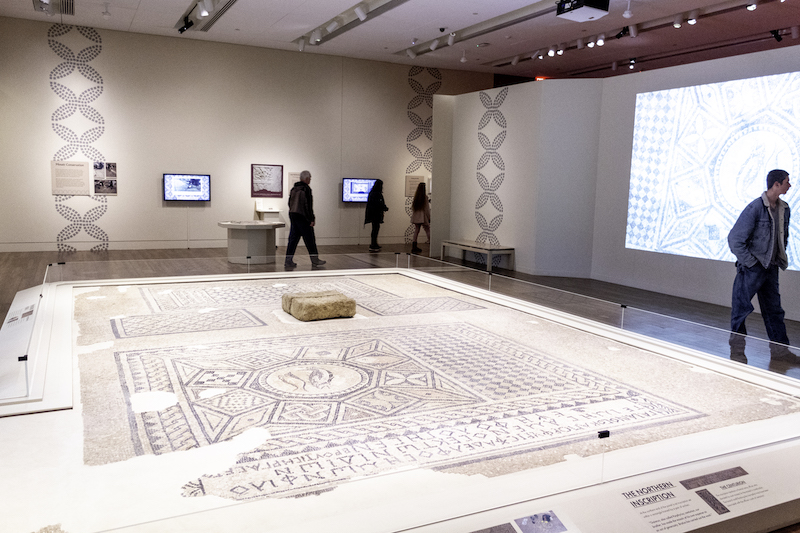
The Megiddo Mosaic Experience
Undoubtedly, the biggest draw for us—and what I believe to be one of the most significant artifacts in the Museum of the Bible—was the Megiddo Mosaic. I am certain that our family spent over an hour on this exhibit alone. The minute you walk into the gallery, the significance of this find is evident in the atmosphere—you can feel it in the air and it’s intellectually stimulating and emotionally overwhelming. The Megiddo Mosaic takes you back 1,800 years to 230 A.D., just shy of 200 years after the death and resurrection of Jesus. This mosaic is now the earliest evidence we have of a church meetinghouse or prayer space. Historically, in this era, local church communities utilized houses, caves, and other more private spaces. The Megiddo Mosaic is not only the oldest known church structure but also the earliest external evidence—outside of the scriptures and Christian writings—that the early church recognized Jesus as God, thanks to an inscription found on the mosaic floor. Critics of Christianity have long argued that the early church did not truly confess Jesus as God, and I have seen modern rabbis argue that this was an invention of Paul and later Roman-influenced Christianity. This discovery shows us that the movement has long held the confession that the Jewish Rabbi Jesus is God.
The Megiddo Mosaic was discovered in the Megiddo Prison, an archaeological site near Tel Megiddo, Israel. This site revealed the foundations of the oldest Christian church building ever found. Archaeologists believe it was abandoned, likely due to the Diocletianic Persecution, around 305 A.D. The mosaic was found near the remains of the ancient Roman town of Legio, known as a training ground for the Roman army. The Christian church was interwoven into the everyday life that was found in the shadows of one of the most well-known Empire training grounds.
The Importance of the Megiddo Mosaic
Thanks to a combination of chance, divine providence, and the early church’s protective measures of the mosaic floor — such as covering the floor with broken pottery —the mosaic is remarkably well-preserved and provides an unmatched glimpse into history and confession. The Megiddo Mosaic features many common geometric patterns of the time, as well as early Christian symbols, including the fish, representing the vocation of Jesus’ disciples and the miracle where Jesus provided food for crowds. This symbol defines the early church. At the center of the floor, is the rock that once held a table for the practice of the Lord’s Table. This is in the center of the building, showing how the practice of the Lord’s Table was central to the life and gatherings of the early church. Here, outside the Roman military camp of Legio, we see women celebrated, the name of the mosaic creator, a Roman centurion who contributed his house and resources, a woman’s confession that Jesus is God, and more.
The Israel Antiquities Authority oversaw its preservation, removal, and eventual transport to Washington, D.C., where the Megiddo Mosaic is currently on display, thanks to the partnership of the Museum of the Bible and the Israel Antiquities Authority, until July 2025. When you visit the Museum of the Bible, you can be among the first to explore the oldest Christian church known in the world in this groundbreaking exhibit. The inscriptions are undeniably important and you will want to see them with your own names. They also can teach us a lot about the early church.
- “Gaianus, also called Porphyrius, centurion, our brother, has made the mosaic at his own expense as an act of generosity.” Gaianus is a Latin name, but his more familiar name, Porphyrius, is Greek, which could suggest he was from one of the eastern provinces. The fact that he didn’t use his full Roman name might also point to the idea that Gaianus dedicated this mosaic in a personal, rather than an official, role. Although “brother” was a common term among Christians, it’s unclear whether Gaianus was actually a Christian. However, the inclusiveness of the word brother would imply so.
- “Brutius has carried out the work.” Mosaic artists were skilled workers in the Roman Empire, but not all signed their work. Their craft was divided into roles: Pavimentarii leveled the ground, Pictors drew the design, and the tessellarii laid the stone tesserae to create the mosaic. Scholars suggest Bruitius to be the tessellarius of the mosaic.
- “The god-loving Akeptous has offered the table [Lord’s Table] to God Jesus Christ as a memorial.” The inscription reveals that Akeptous donated the table, which was the room’s undeniable focal point. We can suspect that she may have been a woman of means and social standing, referred to as philotheos, meaning “God lover.” The table, likely used for the Lord’s Table practice, was at the center of the room. The phrase “to God Jesus Christ” is written with abbreviations, known as nomina sacrum, marked by a line over each word – showing their interconnectedness and this woman’s undeniable confession that Jesus is God.
- “Remember Primilla and Cyriaca and Dorothea, and lastly [or moreover], Chreste.” This inscription is unique because, instead of asking God to remember individuals, it calls the community to remember these women. Little is known about them, and while they were clearly important to the community, the inscription doesn’t clarify whether they were patrons, martyrs, or honored for another reason. I would suspect that they were influential enough that they were not only needed to be remembered, but probably had leadership and experienced martyrdom for it.
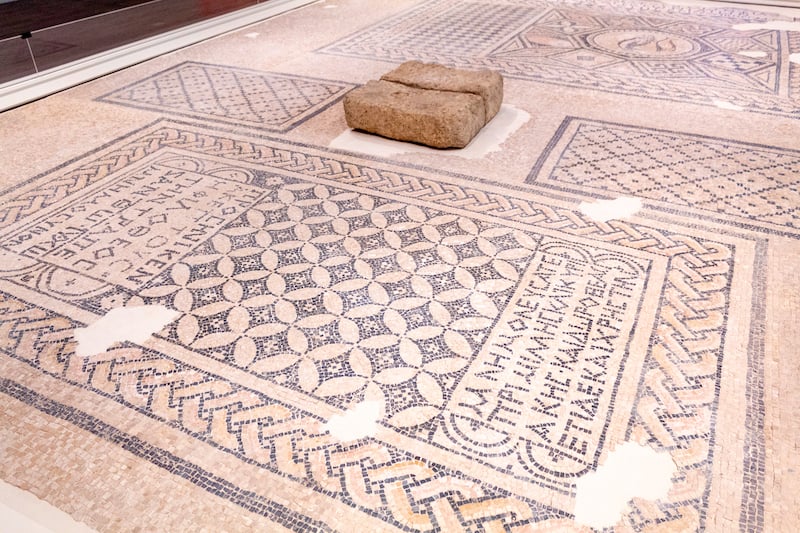
The fish depicted in the Megiddo Mosaic is the earliest symbol of Christianity, predating the cross, which wasn’t widely used until after Constantine’s time. The Greek word for fish, ΙΧΘΥΣ (ICHTHYS), became an acronym confessing Jesus as God, standing for “Jesus Christ, God’s Son, Savior.” These fish also recall the beautiful miracle of Jesus feeding the 5,000, where two fish were multiplied to feed the crowd in their time of need. As people gathered at the Lord’s Table, also in their time of need, they would have been reminded that God alone provides, sustains, and carries our burdens. Archaeologists suggest the fish depicted here are a bass and tuna, highlighting the wide reach of the gospel by 230 A.D. and depicted in these fish. This wasn’t just a religion, but a global movement confessing Jesus as Lord. In Jesus alone, we find abundant life and the answers to our need for place, people, and purpose.
The Witness of the Megiddo Mosaic Experience
When I entered the room, I immediately felt the significance of what lay before me. I paused to take in every fact, artifact, and story woven into the exhibit. I was moved and touched emotionally, and in the nerdy history loving side of my soul.
In late February, Katie and I returned to the Museum of the Bible, spending the day together and moving even slower this time. We also attended a special event for the release of the documentary about the Megiddo Mosaic Church, which explored the historical, theological, and practical importance of this floor. I’ll share more about this in my next post.
When we saw the floor a second and third time, I wondered if it would lose some of its magic, if it would feel familiar and less special. But as I stood there again, tears fell from the corner of my eyes, and it was as if I felt the Holy Spirit and the conviction of that early church. I wasn’t just moved the first time I saw it—I was even more deeply moved the second and third time that I stood next to it and imagined life for them. In my next post, I’ll dive into the Megiddo Mosaic documentary and the event we attended, but in the meantime, I encourage you, no matter where you are at in the country, start making plans to see this floor for yourself. It’s a powerful, prophetic reminder of the faith we belong to. It stays on display until July 2025.
Megiddo Mosaic: A Prophetic Witness
The early church, as described by Luke in Acts, was devoted “to the apostles’ teaching and to fellowship, to the breaking of bread and to prayer” (Acts 2:42, NET). This church serves as a powerful reminder of what true devotion looks like—devotion not just in words, but in actions. Their commitment of time, craft, finances, and practices to this revolutionary, countercultural community of love is a model for us today. In a time when commitment to church communities is often lacking, we’re reminded that the church is not just an institution but a family—one that is devoted to each other and committed to walking together in faith. May we find greater, not less commitment in us, as we consider the prophetic witness of the Megiddo Church.
In this community, unity was found in diversity, with members ranging from slaves to centurions. Their shared dedication to remembering the sacrifice of Jesus at the Lord’s Table reminds us of the new life that Jesus offers through the Spirit of God. Each time we gather as a church community at the Lord’s Table, we too are invited to join in this devotion, remembering Jesus’ sacrifice and embracing the life Jesus has given us —the church.
Like the early church, we too are called to be devoted to the teachings, the fellowship, the breaking of bread, and the discipline of prayer, making these practices the heart of our community. Through them, we are transformed by the love of Jesus, united in our differences, and moved by awe at the power of the gospel to bring new life to all. May we find commitment abundantly in us, in light of the prophetic witness of the Megiddo Church.
Closing Thoughts
I’m always interested in a good conversation or a cup of coffee. Feel welcome to reach out to me via email —I’d love to hear from you. You can connect with me through Facebook, Instagram, Bluesky, X, LinkedIn, Threads, and/or YouTube.
The NET Bible (New English Translation) is a translation of the Bible with over 60,000 translators’ notes. It was completed by more than 25 scholars – experts in the original biblical languages – who worked directly from the best currently available Hebrew, Aramaic, and Greek texts. I invite you to learn more about it, discover their resources, read it online, download it for free, purchase it, and use their online bible study software (don’t forget their iPhone app).



